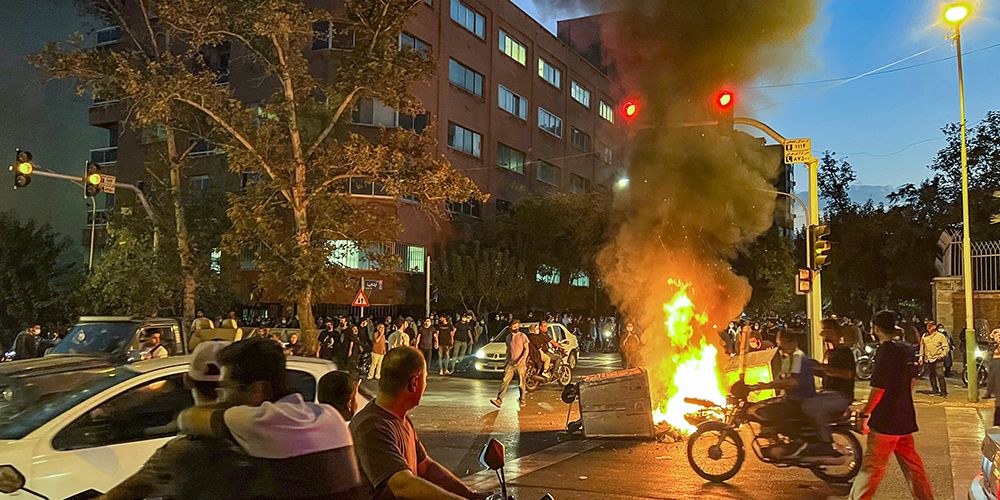Search

Publications
Protests in Iran are not threatening the system, but are creating new challenges

It has been already several weeks that the Islamic Republic of Iran (IRI) is undergoing a wave of fierce mass protests. However, despite the protest activity being rather high and massive actions becoming nearly a routine, the current disturbances do not threaten the existing political system yet. Nevertheless, the on-going protests have a series of new features, which may become a challenge for Iran’s stability.
Protest culture
During almost the entire period of the existence of IRI, the protests have been an inalienable element of its social and political life. Regular mass upheavals have become a certain model of interaction between the government and the society. Despite rather heavy-handed action of the authorities against the insurgents, almost always the protests forced the government to listen to the masses and to adjust its course.
The political system of Iran comprises both democratic and non-elective government institutions. The first ones, like Mejlis and the President, offer the citizens the possibility of feedback – at least in the form of elections. However, for such institutions as the Supreme Leader and the Islamic Revolutionary Guards Corps (IRGC), protests are practically the only way to make them aware of the social problems. The body politic of Iran does not only counteract the protesters, but also responds to their demands [1].
The protests within the Iranian Green Movement in 2009 may be used as an example. After them, Hassan Rouhani, the reformist and the centrist, came into presidency in 2013, who was promoting the rapprochement with the West the liberalization of the IRI domestic policy. Another example: the authorities rigorously suppressed the upheavals of 2019 caused by three-fold gasoline price hike; however, the government proposed a new scheme of social benefits. [2]
The Iranian protests feature certain trends. In the period between 1999 and 2009, the protests were mainly associated with the reformists and their supportive electorate – the middle class. At the same time, a new trend was formed within the broad masses by 2017 – the protests of the poor. Traditionally, the deprived groups of the population are considered the electorate of the conservative wing in Iran. The format of protests also changed: there are no political slogans and claims, the riots are moving from the squares of the metropolitan cities to the suburbs or small towns. Protests have become more aggressive, people started using violence more and more, including clashes with police forces and arson attacks on shops, banks and fueling stations.
Nevertheless, it does not mean that only the poorest classes participate in the protests. Over the recent two years, the upheavals were quite different from the standpoint of their social base, geography and format. None of the recent protests has become a truly massive one engaging the entire nation, but starting from April 2021, there was not a single month, when people would not go out in the streets. And the Iranians have numerous reasons to do so.
Causes of public anger
After the Green Movement of 2009-2010, there was a temporary relative standstill in Iranian protests. It was associated with the expectations of the nuclear deal to be signed, as it promised to resolve many problems. Then, in 2015, a different type of activity was observed: people went out in the streets welcoming the agreement and anticipating a brighter future.
However, in the winter of 2017-2018, the country was seized by mass protests due to the abrupt rise of prices for eggs; these protests caused several dozens of victims. Then, in November 2019, Iran was staggered by the bloodiest riots in its contemporary history caused by the gasoline price hike. Both times, the protests had two distinctive features. Firstly, the main cause was the frustrated expectations associated with the promises of the reformists to improve the living standards after closing the nuclear deal. Secondly, the poorest citizens constituted the core of the protesters, and they immediately switched to violence.
After those events, there were no meaningful protests in Iran until September 2022. Nevertheless, the protest activity remained at a rather high level and showed itself in local demonstrations, episodic rallies, strikes at some enterprises, and activities in the Internet.
Of course, in the first instance, the discontent in Iran today is underpinned by difficult economic situation, which became especially aggravated starting from 2018, after the US exited the nuclear deal and the main sanctions against the IRI were reinstated. According to the World Bank, the effective GDP of Iran in 2020-2021 is commensurate with the level of 2010-2011, and in per capita metric it is hardly achieving the level of 2004-2005. [3]
In recent years, the inflation in Iran achieved 40%, the unemployment among the younger generation is around 30-40% [4], plus the FOREX market demonstrates very high volatility, and there are some other factors.
In addition to general economic problems, there is a number of other complications, first of all – infrastructural ones, which are frustrating for the society. One of them is electricity shortage leading to rolling blackouts. Thus, in 2021, local spontaneous protests took place because of that. [5] In the hot season, the situation is getting worse due to using air conditioners. Moreover, rivers in Iran are growing shallow in summers [6], which restricts the operation of hydropower stations significantly.
The authorities are trying to mitigate the problem by introducing electricity consumption quotas for government organizations [7] and restrictions for cryptocurrency mining. [8] However, these measures are nothing but sticking plaster solutions, because the root cause of electricity shortage is poor efficiency of the subsidies policy, according to which the citizens pay pennies for electricity. All this leads to energy consumption growth and unprofitability of the industry itself, which has negative effect on the infrastructure quality.
Water shortage is another source of public concern. The cause is not only of environmental nature (the global warming), but also the erroneous water management policy of the authorities. [9] Thus, the main reason for water shortage is the long-lasting course for assuring food security leading to growing water-consuming crops. [10]
The water crisis traditionally gets especially acute in the summer and every year leads to local protests associated with clashes and victims. [11] To resolve this issue, the economic model needs change and Iran needs to be integrated into the global economy, which is impossible in the context of the current sanctions against Teheran. Hence, the problem will persist in near future and will continue to provoke social unrest.
At the same time, despite such big variety of causes for upheavals, all the protests during the recent two years were of more or less local character. Their economic, environmental and social agendas were what they had in common. Political slogans very seldom could be heard during the public actions and never were their leading idea. However, the September 2022 protests drastically changed the general picture.
Women’s protest
In mid-September, in the Teheran subway police arrested 22-year-old Mahsa Amini for incorrect wearing of hijab. She came to Iranian capital from Kurdistan to visit her relatives. Some eyewitnesses reported she was severely beaten in the police station, then collapsed, fell into coma and died in the hospital [12]. Videos from the hospital ward, where medics were struggling for 48 hours to save Mahsa’s life, became Internet memes.
After this 22-year-old woman died, Iran was seized by the wave of mass protests, which are going on for more than a month. And even though initially women constituted the main protest resource, these actions cannot be called just women’s protest. The agenda of fighting for women’s rights became the common one and the uniting factor. All social groups having any demands to the government are participating in these disturbances.
It is important that today the protest has a clear anti-system rhetoric. For the first time, political slogans became the main ones, not the secondary ones or those supporting the main agenda, which almost always was economic or social. In addition, the protesters challenged one of the main symbols of the Islamic Republic of Iran – hijab. Many Iranian traditions and laws changed since the times of 1979 Revolution; however, hijab and prohibition of alcohol always remained the red lines, which could not be revised. They are still the main indicators of the state identity, so it can call itself the Islamic Republic.
The protests themselves are of a rather chaotic character: usually, no locations are designated in advance, small groups may initiate clashes with the police anywhere, and then they are joined by passers-by or by the citizens, who deliberately went out in the street to «find» the protest. [13]
At the same time, despite the big scale and severity, this protest is unlikely to result in changing the political system. The authorities remain ready to oppress the protesters, and there are no signs of any elites’ splinter. The protest has no organization or clear logic of objectives. Thus, in separate regions the protesters are successfully opposing the security forces and even seize and block some streets; however, they do not know what to do with that and in a while just go home. Sooner or later such protest activity will decline.
At the same time, it is quite probable that separate flashes of protests across the country will continue, as the degree of public discontent remains very high. The authorities do not seem to be willing to start any dialogue with the public claiming the external forces in forceful escalation of the situation. [14] Official opinion of forensic physicians states that Mahsa Amini died due to the illness she suffered from in her childhood, but not because of any physical impact. [15]
Overall, today there is not threat for the very existence of the Islamic Republic of Iran, however, in case the protests continue, there is a probability of losing control of the national stability. It is getting more and more difficult to support it using just law enforcement forces – in major cities they are being seconded for additional shifts practically every night.
We also need to take into account the fact that no tangible improvements of the economic situation in Iran may be expected in the near future. The nuclear deal negotiations are obviously hampered, and the attempts of the authorities to introduce adjustments in the national governance are at most of cosmetic character. Iran has systemic problems, which may not be resolved «overnight» even if the sanctions are lifted. All of this proves that the level of public discontent will stay, and it is highly likely that the protest activity will persist in the short-term perspective.
1. Protest as a way of dialogue, or how the Iranian authorities are interacting with the society. RIAC, 17.06.2022.
2. How the Iranian authorities instigated a new type of protest. Vedomosti, 06.12.2019.
3. Islamic Republic of Iran, World Bank Organization.
4. The Islamic Republic of Iran Four Decades, Fathollah-Nejad A. 2020.
5. After protests Iran's president apologizes over power blackouts. Reuters, 06.06.2021. https://www.reuters.com/world/middle-east/after-protests-irans-president-apologises-over-power-blackouts-2021-07-06/
8. Iran bans cryptocurrency mining for 4 months amid power cuts. Reuters, 26.05.2021.
9. Never-ending circle: how can drought force Iran to give up cryptocurrency. TASS, 02.06.2021.
10. Protest as a way of dialogue, or how the Iranian authorities are interacting with the society. RIAC, 17.06.2022.
11. Unfortunate legacy. Why does Iranian street go out for protest? TASS, 02.08.2021.
12. Iranian woman dies after being beaten by morality police over hijab law. The Guardian, 16.09.2022.
13. NBC: they burn their hijabs and cut their hair — Iran seized by protests against traditions and governments. Russia Today, 23.09.2022.
14. Ayatollah Khamenei blamed Israel and the USA for organizing disturbances in Iran. TASS, 03.10.2022.
15. Iranian authorities stated that Mahsa Amini’s death was not caused by physical impact. TASS, 07.10.2022.







